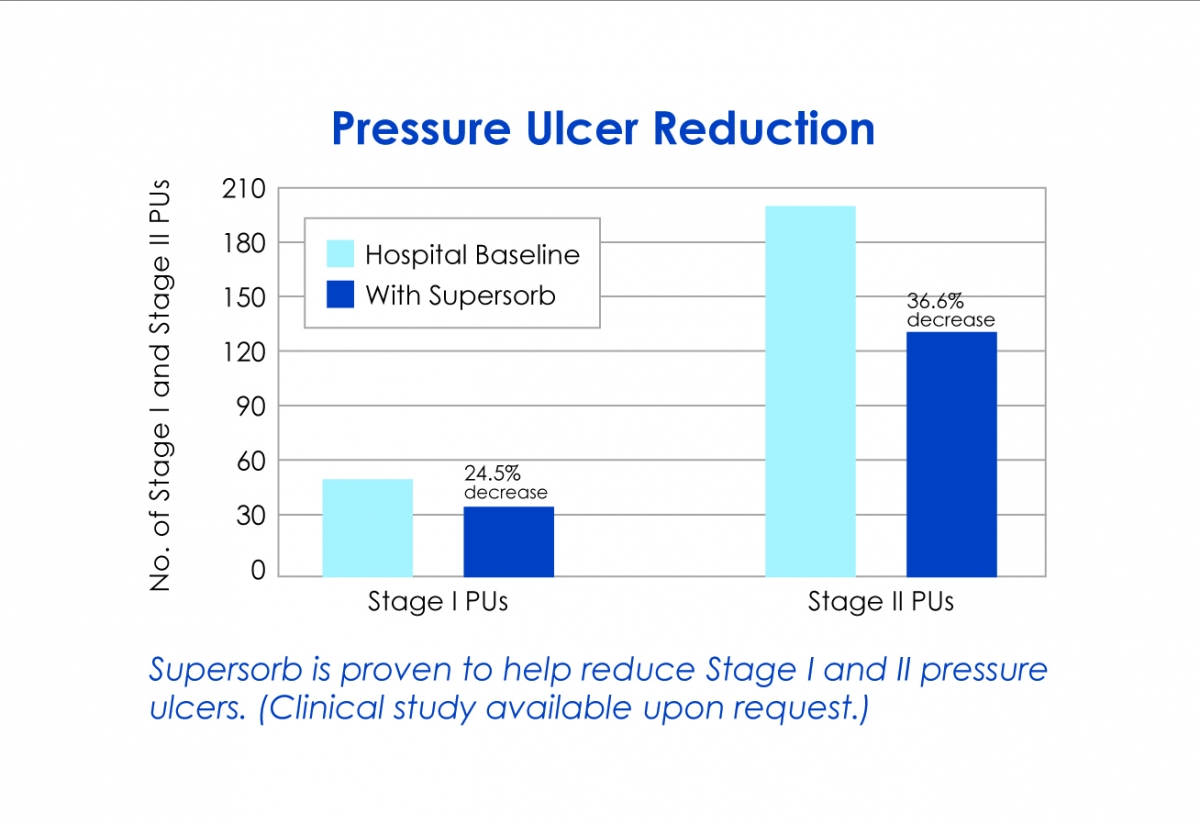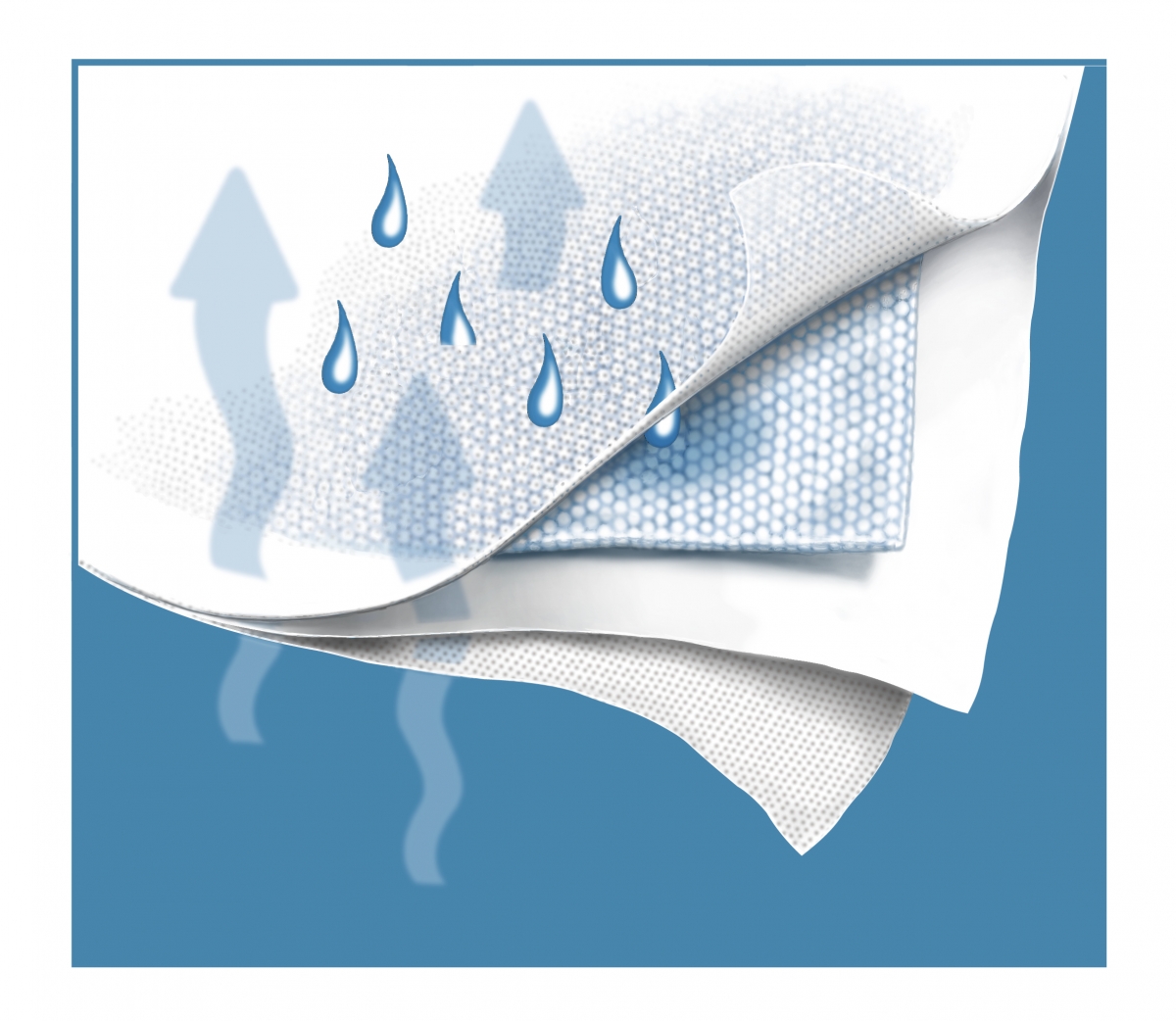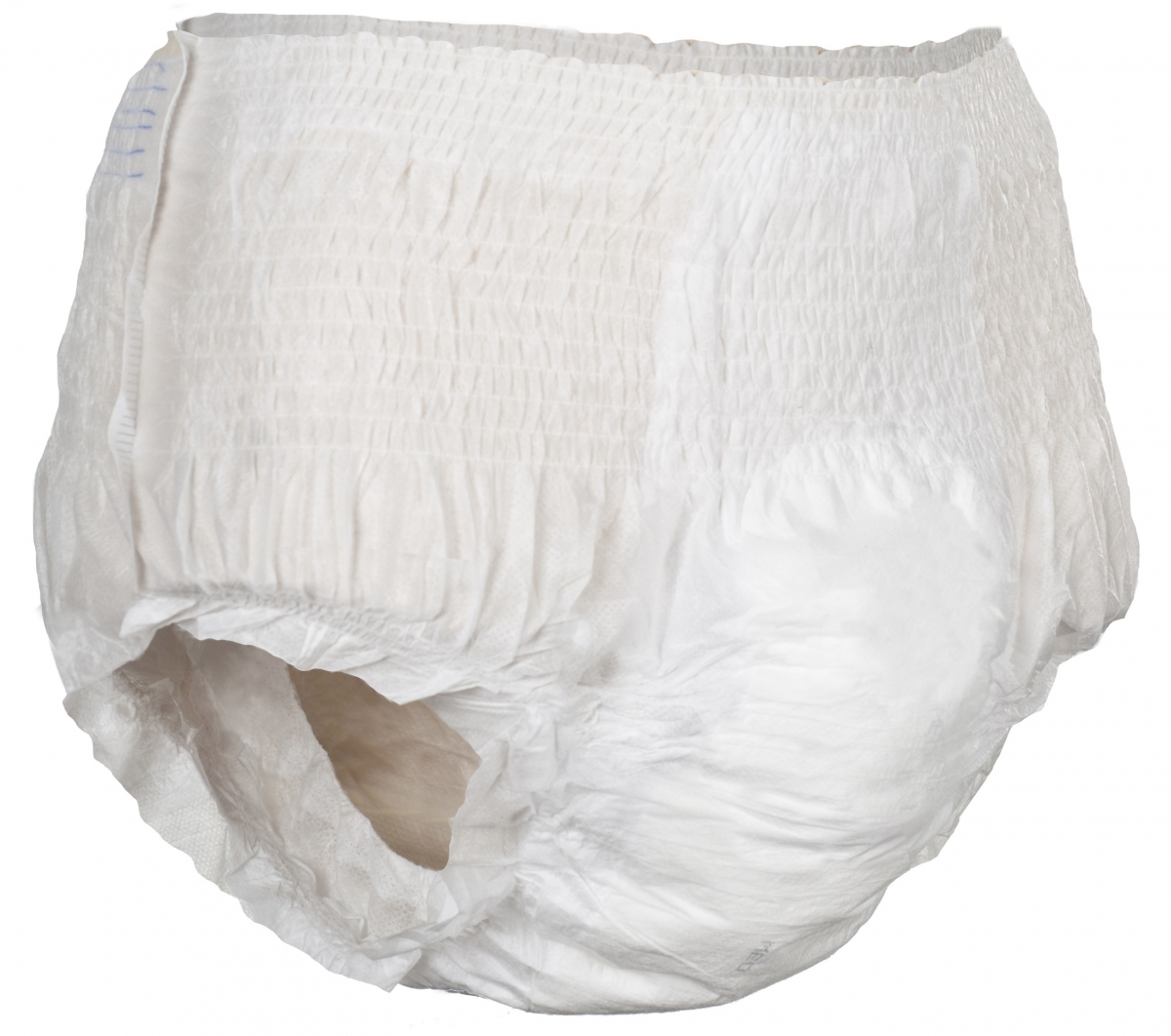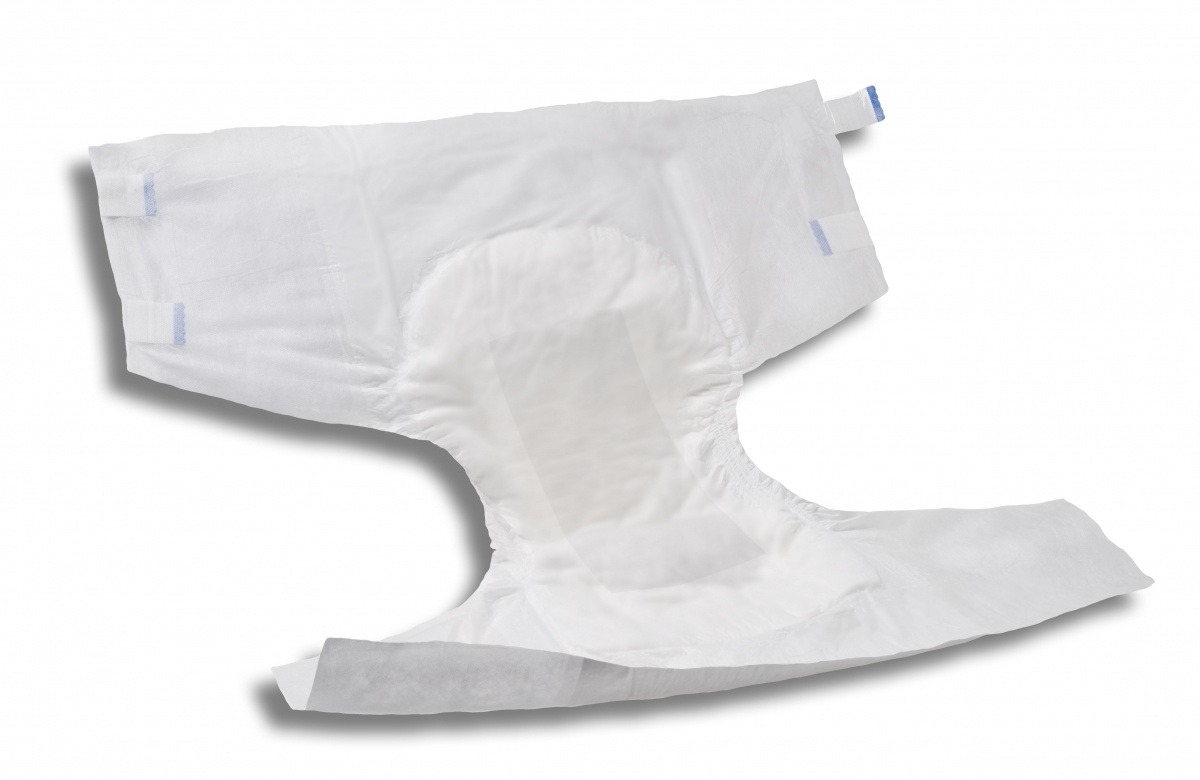Incontinent patients are at particular risk of developing ulcers, rashes and skin irritations due to frequent exposure to moisture. Skin contact with urine and/or stool can cause the skin to soften, thereby weakening its ability to act as a protective barrier. In some cases, pressure ulcers can develop in as little as a few hours. This can lead to incontinence-associated dermatitis (IAD).
IAD Symptoms
IAD may present as redness, inflammation, small bumps, blisters or burning pain in the perineal area. With continued, persistent moisture from urine and/or stool these symptoms can escalate and compromise patient skin wellness. Fecal incontinence, especially diarrhea, can pose an even greater risk than urinary incontinence. Liquid stool contains enzymes that trigger chemical reactions in the skin, causing rapid breakdown.
Patients with specific conditions, such as diabetes and obesity, often present circumstances that put them at even greater risk of developing skin infections. For example, in obese patients moisture can become trapped in the folds of the skin, causing growth of bacteria, fungus and viruses that result in skin breakdown.
Implications for Home Care
Incontinence-associated dermatitis directly correlates to the total cost of patient care. Once formed, pressure ulcers can be slow and difficult— not to mention costly—to heal. Fortunately, incontinence-related wounds can be managed and prevented. Interventions include:
- Turning the at-risk patient at specified intervals
- Properly cleansing and drying the skin after each incidence of incontinence
- Applying a skin protectant such as moisture barrier cream
- Utilizing products that contain or divert urine and stool away from the skin
- Changing briefs, underpads or other disposable products when wet or soiled
Due to higher acuity in our aging population, health-care professionals and suppliers of adult incontinence products are facing increased mandates to ensure positive patient outcomes. This is starting to show up more in the home healthcare environment. As a result, many case managers are requesting higher quality, outcomes-based incontinence products designed not only to prevent pressure ulcers and promote healthy skin, but also to improve patient comfort and overall quality of life.
This focus on outcomes is opening new market opportunities for HME providers in the areas of wound care and prevention, adolescent care and managed care.
 Product Advancements
Product Advancements
Thanks to ongoing research and development, today’s disposable adult incontinence products often incorporate technological advancements that help alleviate pressure ulcers related to incontinence. Higher quality products are breathable or air-permeable, and many contain super absorbent polymers that channel fluid away from the skin and lock it into the core of the product. In addition, features such as secure fitting
tape tabs and leak-guard leg cuffs help prevent moisture from coming in contact with the skin.
Attends Healthcare Products is one company that is focused on advancements such as these to help lower the holistic cost of incontinence care while providing premium performance for skin wellness and comfort.
Air Permeable Underpads
 For example, Attends’ Supersorb All-in-One Underpads (fig. 2) are proven to dramatically reduce Stage I and II pressure ulcers, resulting in better patient outcomes (fig. 3). A critical performance factor to ensuring skin health is the underpad’s moisture vapor transfer rate. A product like Supersorb has air-permeable layers, allowing air to flow through for comfort and dryness (fig. 4).
For example, Attends’ Supersorb All-in-One Underpads (fig. 2) are proven to dramatically reduce Stage I and II pressure ulcers, resulting in better patient outcomes (fig. 3). A critical performance factor to ensuring skin health is the underpad’s moisture vapor transfer rate. A product like Supersorb has air-permeable layers, allowing air to flow through for comfort and dryness (fig. 4).
Another critical component is absorbency. Supersorb, for example, stays more than four times drier than competing brands. Other underpad features that impact performance and health include:
- Super absorbent polymers that lock fluids away from the skin
- Durable backsheet to prevent moisture from passing through to the bed sheet
- Tensile strength and durability for use in multiple applications, including severe incontinence and re-positioning patients.
 HME providers can look for these underpad features and ask to see test results that compare various brands in terms of air flow, dryness and absorbency.
HME providers can look for these underpad features and ask to see test results that compare various brands in terms of air flow, dryness and absorbency.
Protective Underwear
Protective underwear are worn like regular underwear, making them a popular product for people with active lifestyles. They are suitable for moderate to heavy incontinence. Some of the more advanced protective underwear designs strive for optimal air flow, dryness and absorbency, but these products often deploy different technologies and features than underpads.
For example, Overnight Protective Underwear (fig. 5), Attends’ most robust underwear for extended wear, has a triple-tier moisture locking system—cellulose fibers, microporous acquisition layer and super absorbent polymer—for 50 percent more absorbency than moderate and extra absorbency products. Its breathable, air-flow material and leak-guard leg cuffs help promote healthy skin and prevent leakage.

Breathable Briefs
Briefs are designed for heavy to severe incontinence, so performance in the area of absorbency is critical. HME providers can look for a moisture locking system, breathable side panels and additional polymers for extra absorbency—all to promote skin wellness. These innovations are available in products like Attends’ Extra Absorbent Breathable Briefs (fig. 6).
Reimbursement Opportunities
 Many Attends products already meet Medicaid and HMO requirements, and managed-care programs are increasingly reimbursing for the more advanced products that promote patient health. In addition, private pay consumers with unmet needs from traditional retail offerings commonly seek higher performing adult incontinence products such as these.
Many Attends products already meet Medicaid and HMO requirements, and managed-care programs are increasingly reimbursing for the more advanced products that promote patient health. In addition, private pay consumers with unmet needs from traditional retail offerings commonly seek higher performing adult incontinence products such as these.
Partnering with the right manufacturer can improve your return on incontinence products. Attends Healthcare Products, for example, works with HME providers to evaluate reimbursement opportunities on a state-by-state basis, taking into account product types, case counts, shipping procedures, rates and other factors critical to dealer profitability.
